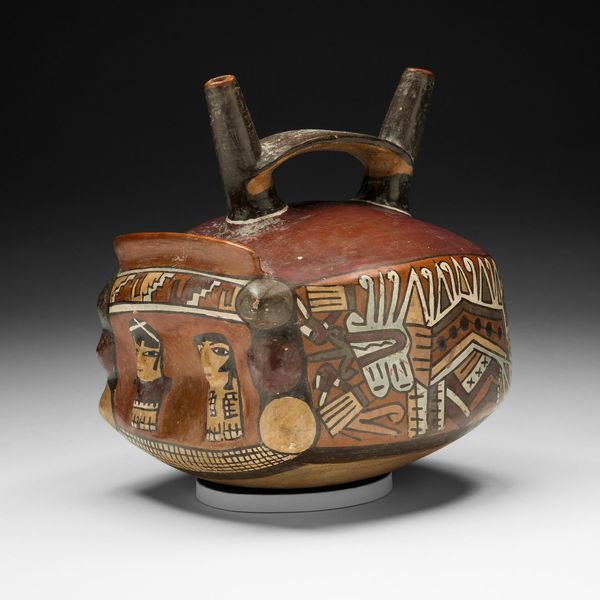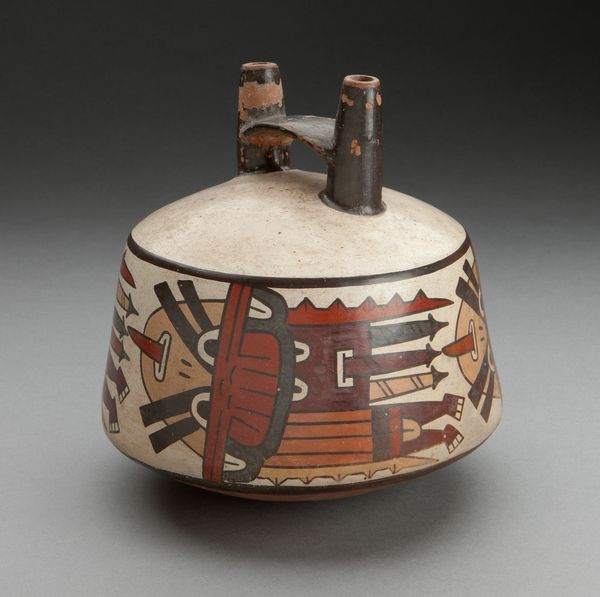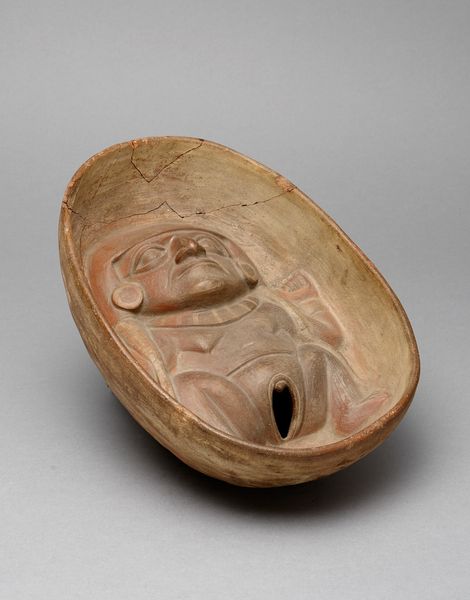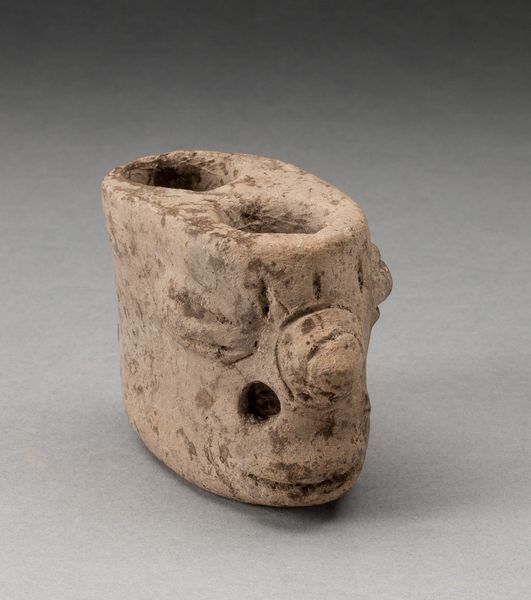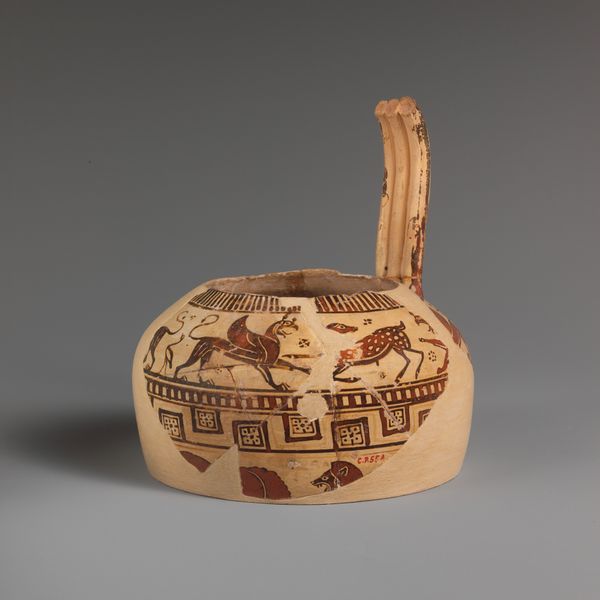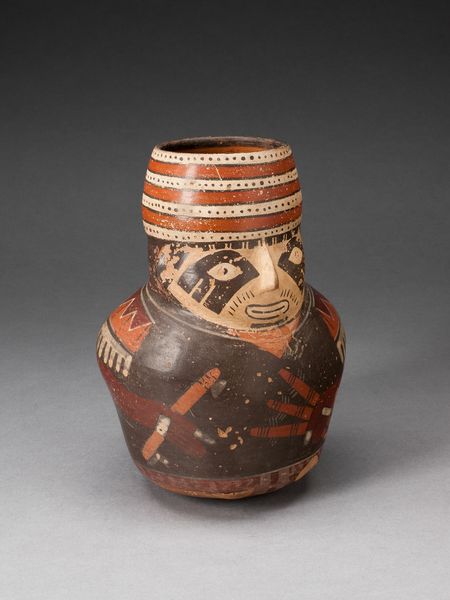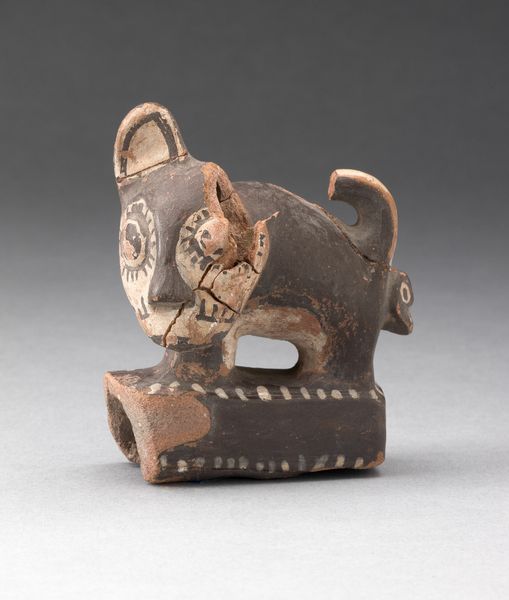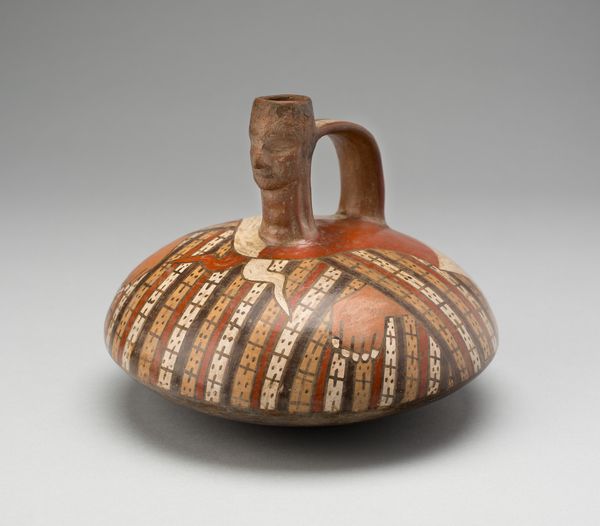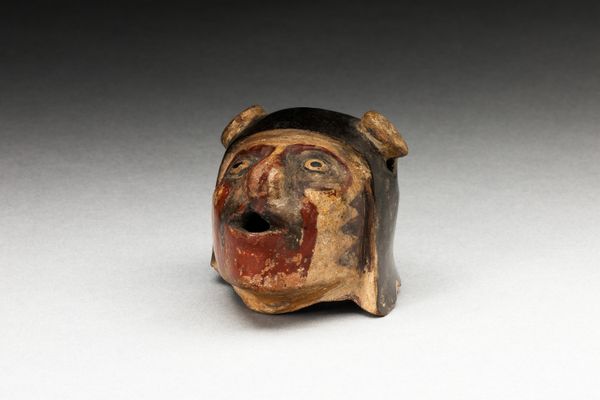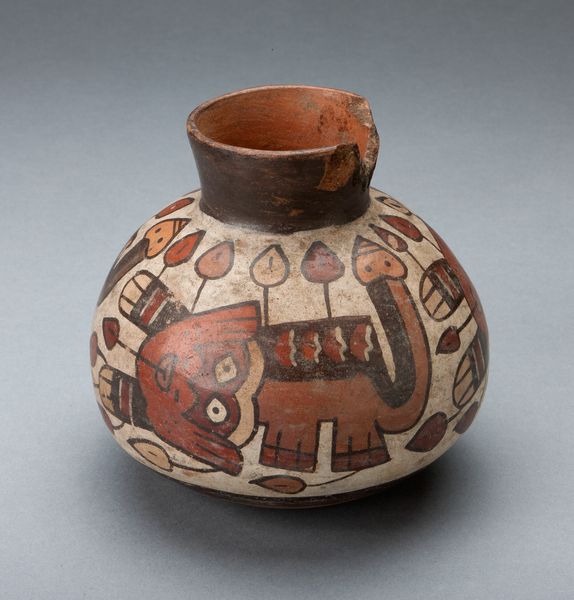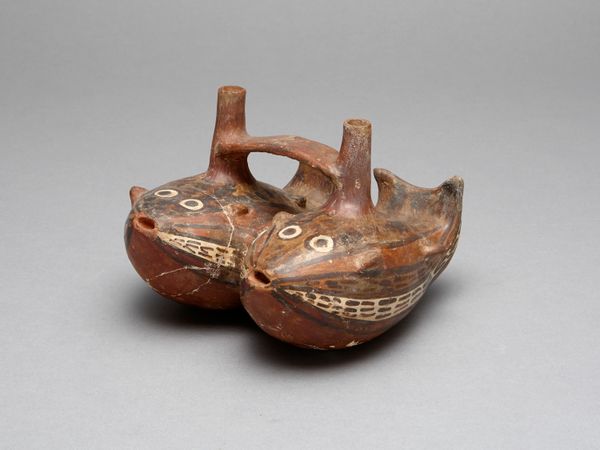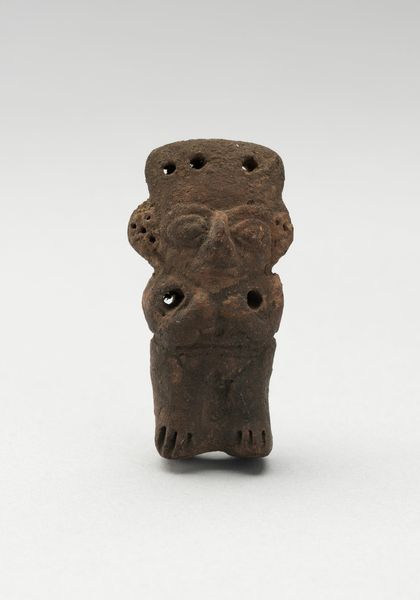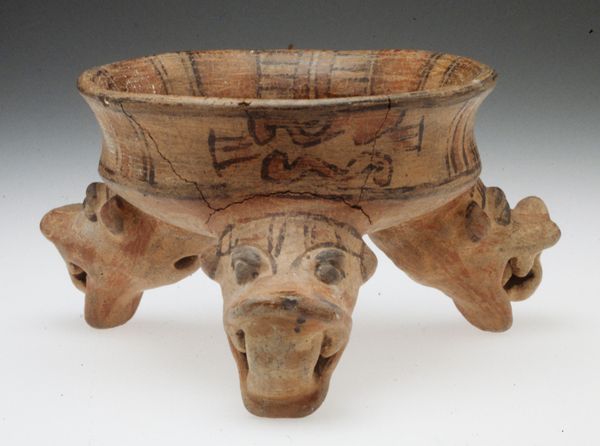
Terracotta onos (leg guard used in carding wool) 510 BC
0:00
0:00
drawing, ceramic, terracotta
#
drawing
#
greek-and-roman-art
#
ceramic
#
figuration
#
roman-art
#
ancient-mediterranean
#
ceramic
#
terracotta
Dimensions: length 10 1/2in. (26.7cm); greatest diameter 5 1/4in. (13.4cm)
Copyright: Public Domain
Curator: This terracotta object, dating back to 510 BC and attributed to the Golonos Group, is held here at the Metropolitan Museum of Art. It’s called "Terracotta onos", and it was actually a leg guard used in carding wool. Editor: Well, it's quite arresting, isn't it? The shape is unusual, and the figural scene gives it an active, process-oriented feel, almost as if the vessel itself is participating in some ritual. Curator: Precisely! Seeing this piece helps us connect directly with the material realities of ancient Greek society. Here, we're looking at the intersection of artistic production and textile manufacture. What might seem like a functional item was also a canvas for expressing cultural narratives. Note the narrative band, filled with figural forms. Editor: I see robed figures...the simple linear style and frieze-like arrangement. It strikes me that these aren’t static figures, but depictions of bodies in motion, each gesture deliberate in a particular communal labour. What do you make of the female head attached at the front of the work? Curator: A great observation; and the sculptural head almost humanizes it, infusing the tool with an element of mythology or divinity connected to fiber production. Textiles were so linked to identity, gender and even socio-political order. These items transcended basic production. The materiality is equally important. Terracotta – what does its presence communicate about access, labor and purpose? It prompts the question of how these artifacts were experienced, understood and valued during their time, Editor: Indeed, seeing the process represented so beautifully reminds us of labor's critical contribution, beyond mere function. It makes me think about our contemporary production methods, where we’re so removed from materials. This object reminds us of a time when process and artistry were intertwined. It speaks to a tangible understanding of resource and labor. Curator: And the beauty, itself, suggests a deliberate effort to honor these acts of textile production, which has implications on status and work distribution throughout these societies. It bridges this division that elevates certain art forms above all others and connects more profoundly. Editor: Ultimately, this simple object becomes a lens for understanding cultural values.
Comments
No comments
Be the first to comment and join the conversation on the ultimate creative platform.
